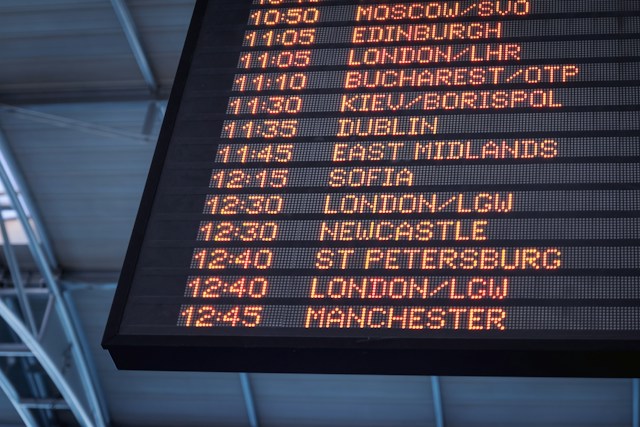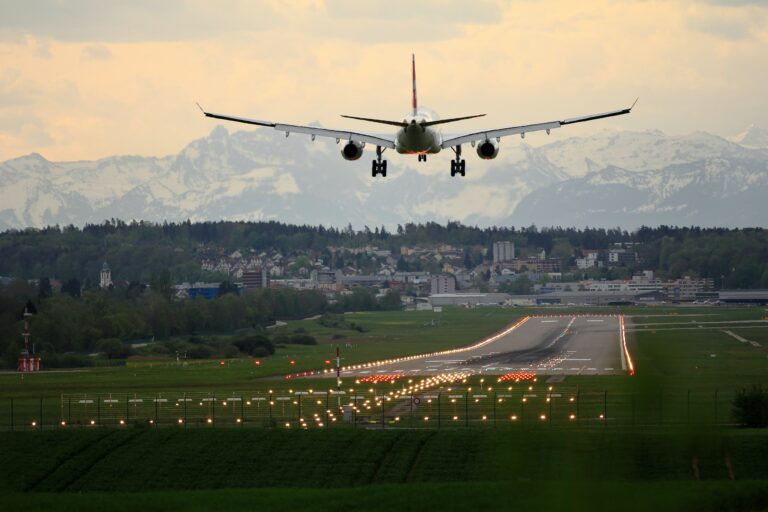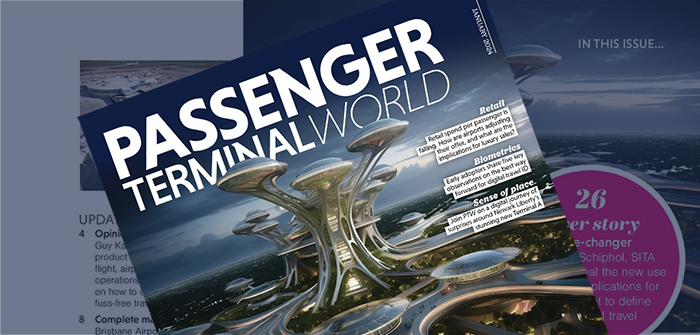 Work together to create a fuss-free travel experience, says Guy Kavanagh, head of product management for flight operations, airport and airline operations at Amadeus, in an opinion piece first published in the January 2024 issue of Passenger Terminal World magazine.
Work together to create a fuss-free travel experience, says Guy Kavanagh, head of product management for flight operations, airport and airline operations at Amadeus, in an opinion piece first published in the January 2024 issue of Passenger Terminal World magazine.
Travel at its best is a smooth, rewarding and fuss-free experience – until things go wrong. And when they do, the industry has a responsibility – and an opportunity – to make the experience better for travelers.
It won’t be a surprise to learn that the level of disruption has been elevated since Covid-19. Before the pandemic, disruption was mostly related to the imposition of travel restrictions and regularly changing airline flight plans. Post-Covid it has been caused by rapidly increasing demand for aviation. Airports, ground handlers and airlines have needed to quickly ramp up capacity. This has been difficult because of the depleted workforce.
When I talk with family and friends after their travels, they often ask why the industry can’t cope better with disruption. It’s a good question. Historically, there have been several strategic and tactical barriers to improved disruption management, such as fragmented IT systems within individual airlines and a lack of common technology connecting stakeholders. But the future is looking brighter in a number of areas.
After working in the industry for many years I now genuinely believe we have reached a turning point. Every stakeholder I talk with – from airlines and airports, to ground handlers and air traffic control operators – shares the common goal of improving operational performance. Everyone recognizes the impact that disruption has on passengers and the industry.
Let’s examine the role of technology, some of the barriers to progress and why things are now changing.
Better connections
The aviation industry is complex, with many moving parts. Each stakeholder has multiple IT systems that often don’t communicate well enough with each other, let alone with those of other stakeholders involved in managing flights and passengers.
How can an airline ensure that its IT applications can talk with each other to better cascade information during disruption? Let’s look at an example. For most airlines, when a fault is detected by an aircraft a message is sent to the maintenance system. Perhaps the maintenance team then knows that this aircraft will require a two-hour repair on landing, with all the implications for the airline’s schedule and passengers. Unfortunately, this information isn’t typically cascaded to other areas of the airline very effectively.
If a message was also sent to the crew-management system, new plans could be calculated based on the expected delay. If passenger systems were alerted, the airline could automatically consider passengers who may miss connections and re-accommodate them. This level of interconnectivity is only now becoming possible. Hitherto, airlines have often relied on teams of people sharing information manually, resulting in ad-hoc solutions.
This situation is now changing. Airlines are moving to new IATA standards for offer and order management, and as part of that transition many will move to a completely new generation of technology. For example, we launched Amadeus Nevio at IATA’s World Passenger Symposium conference in October. Run from the cloud, Amadeus Nevio enables airlines to better connect their own IT applications, so systems that handle maintenance and crew scheduling can be linked to passenger systems.
As airlines are progressing with their retailing transformation there is greater potential to create deep links between their passenger and operational systems. Doing so enables key operational information to be shared in real time, which will help all stakeholders respond better.

Information sharing
Another of the historical challenges across aviation has always been how best to coordinate multiple organizations involved in managing the operation of each flight to deliver a common awareness. For example, when an airline’s schedule changes due to disruption, the airport needs to reevaluate how it allocates runway slots, gates, stands and other resources to best support the new plans. Sometimes it needs to do this when multiple airline schedules have been impacted. The same is true for other stakeholders at the airport. Buses, refueling trucks and other assets all need to be repositioned.
These disparate teams ideally need the same high-quality information that can be accessed quickly as soon as new operational plans are agreed. A growing number of airlines are increasingly open to sharing this type of information with airport stakeholders – even ahead of time. If an airline doesn’t share some information relating to its passengers and their onward connections, for example, then the airport won’t be able to allocate aircraft to the best gate to reduce connection times for passengers.
We’re encouraged to see an increasing number of airlines and airports reach agreements on sharing this type of information. Technology isn’t a barrier here. It’s becoming possible for an airline to consent to sharing this type of information with just a few clicks.
Machine learning
Ensuring flights depart on time and passengers get to their intended destination in the best-possible way is a huge computational task. Multiple variables need to be factored in to this complex decision making, including available slots, aircraft availability, crew availability, airport resource availability, passenger destinations, the airline’s commercial priorities and, most importantly, regulatory requirements that ensure safety. When the environment changes, perhaps due to bad weather, this multidimensional problem needs to be resolved as quickly as possible, beginning with the airline’s schedule.
Fortunately, new technology is helping from the moment airline networks and schedules are originally planned. A good example is Southwest Airlines, which used Amadeus’s SkyMAX to optimize its network planning process. When faced with disruptions such as the grounding of B737 MAX 8 aircraft in 2019 and the challenges brought about by Covid-19, Southwest used the clean-sheet scheduling capabilities embedded in SkyMAX to quickly and efficiently redesign its network. This technology allowed Southwest to analyze various scenarios to optimize schedules with fewer aircraft, adapt to reduced travel demand during the pandemic, and maintain critical network connectivity.
Another factor is artificial intelligence, which is being used to model where and when disruption is likely to occur so that airlines can build additional slack into their operational plans from the outset. This improves on-time performance by ensuring there are additional time and resources at key pinch points.
New approaches are also helping to solve this problem better during disruption. For example, rather than calculating how best to reaccommodate an airline’s passengers based on that carrier’s available seats, steps are being taken so that better solutions can be found across the affected airline and its partners. By working together, airlines can share their capacity and offer passengers more optimal options that limit the overall cost of a disruption scenario.
Disruption management
When disruption occurs, airlines and airports need to be in constant contact to match airport capacity to evolving airline plans. Today this interaction is largely manual, relying on phone calls and email. But airport operational control centers are now beginning to overhaul their technology.
Dynamic dashboards covering key metrics, including runway capacity, turnaround efficiency and on-time performance, provide a real-time view of airport capacity and performance. By drawing on third-party data streams, airports can see the likelihood and potential impact of impending bad weather before it happens. But perhaps most importantly they can make all this information available to their airline partners through collaborative platforms. This brings key stakeholders together around shared metrics so that better decisions can be made more quickly and more collaboratively. It’s a step change from the fragmented systems and legacy communications channels typically in use today.
So while disruption may still be elevated across many parts of the world – and never totally unavoidable – there are options for airlines, airports and ground handlers that choose to collaborate and do things differently. If we want to put the passenger experience at the heart of travel, we need to put aside historical points of tension around competing commercial objectives. We need to work together more collaboratively – and technology can be a key enabler.
This article originally appeared in the January 2024 issue of Passenger Terminal World. To view the magazine in full, click here.


